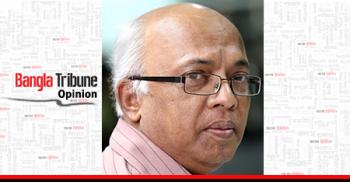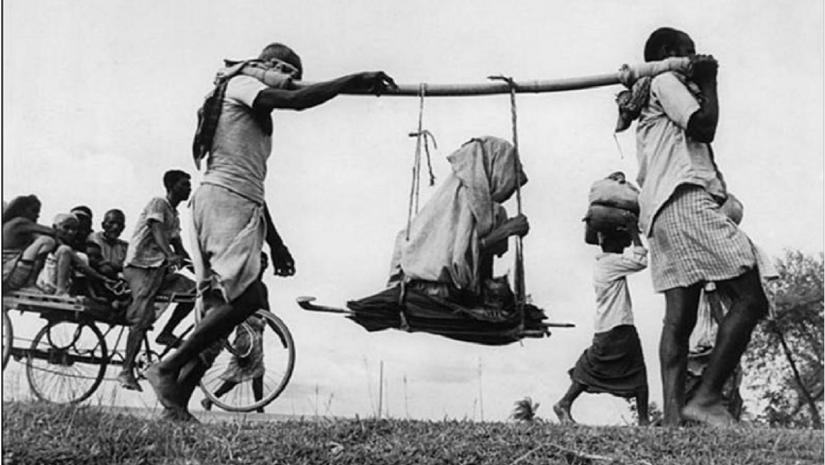 In these monsoon days of July, memories of the blood-drenched division of India come alive. Or, more precisely, it is the mistakes, the blunders made by the principal actors of the time that we recall.
In these monsoon days of July, memories of the blood-drenched division of India come alive. Or, more precisely, it is the mistakes, the blunders made by the principal actors of the time that we recall.
And we remember because of the gigantic tragedy that was imposed on us, indeed on our parents’ generation --- among the Hindu, Sikh and Muslim communities --- the repercussions of which all of us, seventy two years on, yet plod through. The divisions created by questions of faith, the instability engendered by British colonialism, the ethnic cleavages inaugurated by communalism continue to undermine the rise of a modern, cooperation-based subcontinent.
As many as two million people died in the run-up to and during Partition. Hindus, Muslims and Sikhs murdered one another in frenzy even as they left their ancestral homes and moved into uncharted territory. Fourteen million people were displaced through Partition. Bengalis saw their ancestral land --- Bengal with all its history and heritage --- knifed through before freedom could arrive. In Punjab, the story was similar, with Punjabis who had lived in love and community feeling for ages, suddenly discovering that their divergent religious beliefs were what mattered.
Where were the mistakes made? And who do we hold accountable for the bizarre turn of events which caused the wrenching division of a country that till 14 August 1947 was home for all of us, we who today are strangers to one another as Pakistanis, Indians and Bengalis?
One of the earliest of blunders was the adoption of the Lahore Resolution by the All-India Muslim League in March 1940. Of course, there are all those commentators and historians who tend to argue that the resolution was a bargaining chip for Mohammad Ali Jinnah for a large measure of autonomy to be accorded to the country’s Muslim-majority provinces. He did not, it is said, actually expect an independent state for his co-religionists. Despite such assertions, the Lahore Resolution did damage the concept of Indian unity. In time, it would cause havoc.
And then there was the Cabinet Mission Plan worked out in difficult circumstances by a three-member delegation of prominent British politicians --- Stafford Cripps, Pethick-Lawrence and A.V. Alexander --- in 1946. It was a tough call, seeing that the team found it hard for the Muslim League and the Indian National Congress to come to an understanding on the means of keeping India united. In the end, the Cabinet Mission held out hope, through its three-tiered plan advocating the emergence of an independent country with guarantees for its various units. A stubborn Jinnah was persuaded to accept the plan. But he had not reckoned with the possible reaction from his party colleagues, who felt his agreement to the plan had put paid to the Pakistan idea.
And then, in one of those inexplicable, improbable moments when politics and history take a bad beating, Jawaharlal Nehru gave Jinnah the perfect excuse to wriggle out of the deal. Why Nehru committed that blunder or whether it was a calculated move on his part remains a question not answered to public satisfaction in these past seven decades and more. This is how Nehru’s remarks on his party’s position on the Cabinet Mission Plan, stated on 10 July 1946 at a press conference, torpedoed what had essentially been a final attempt to preserve national unity: ‘The first thing is we have agreed to go into the Constituent Assembly and we have agreed to nothing else …What we do there, we are entirely and absolutely free to determine. We have committed ourselves on no single matter to anybody.’
‘The first thing is we have agreed to go into the Constituent Assembly and we have agreed to nothing else …What we do there, we are entirely and absolutely free to determine. We have committed ourselves on no single matter to anybody.’
That, it can be stated in hindsight, was the escape route Jinnah had been waiting for. On 27 July he withdrew from his earlier decision to accept the plan and went back to his demand for Pakistan. Nehru’s mistake led to other mistakes. Jinnah blundered this time when he called a Direct Action Day for 16 August 1946. Neither he nor his party spelt out the details of his new strategy. No one specified the nature of the action day and at whom it was directed. But there were certainly the portents of disaster. Bengal Prime Minister and Muslim League leader Huseyn Shaheed Suhrawardy, in blatantly partisan manner, decreed a holiday on 16 August. It was an invitation to bloodletting. Over a period of four days Muslims and Hindus slaughtered one another on the streets of Calcutta. Anywhere between five thousand and ten thousand people were murdered, the putrefaction of their corpses polluting the atmosphere.
As 1946 gave way to 1947, more blunders were made. It was a mistake for the British government to replace Lord Wavell with Louis Mountbatten. From day one of his arrival in India in March 1947, it was clear Mountbatten was more drawn to self-promotion than to projecting an image of India moving peacefully toward freedom. The Indian Independence Act of 1947 and the Mountbatten Plan, known as the 3 June Plan, were the final nails in the coffin of a united India. They acknowledged the inevitability of a divided India. Mountbatten had a deadline of June 1948 for independence to come to India. He simply brought the date forward to August 1947.
Throughout those fury-driven final months of colonial rule, Mahatma Gandhi progressively retreated into silence. He remained busy trying to put out the fires of communal strife breaking out everywhere. As Nehru, Jinnah and Mountbatten celebrated what the poet Faiz Ahmed Faiz would call the arrival of a pock-marked dawn of freedom, Gandhi mourned the passing of the India of history.
The bitter truth festers still in its manifest form: when the British power came to India, it found a country united in its diversity of culture and race and faith and language. A hundred and ninety years later, it left a broken, impoverished, bloodied and amputated country behind, to be enveloped for decades on end in the hate engendered by religious fanaticism.
The bitterness sown through Partition has lingered.
Pakistan remains a militaristic-communal state dominated by its army.
Bangladesh’s secularism, in a parlous state today, will need a long time to return to the idealism born of the War of Liberation in 1971.
Nehru’s secular India, underpinned by socialism, is today at grave risk from growing Hindu nationalism.
Syed Badrul Ahsan is a political commentator and biographer of Bangabandhu Sheikh Mujibur Rahman and Tajuddin Ahmad.
 Opinion
Opinion
30867 hour(s) 3 minute(s) ago ;
Evening 09:57 ; Wednesday ; Apr 24, 2024
Blundering to Partition 1947
Send
Syed Badrul Ahsan
Published : 16:44, Jul 14, 2019 | Updated : 16:53, Jul 14, 2019
Published : 16:44, Jul 14, 2019 | Updated : 16:53, Jul 14, 2019
0 ...0 ...
/hb/
Topics: Syed Badrul Ahsan
***The opinions, beliefs and viewpoints expressed in this article are those of the author and do not reflect the opinions and views of Bangla Tribune.
- KOICA donates medical supplies to BSMMU
- 5 more flights to take back British nationals to London
- Covid19: Rajarbagh, Mohammadpur worst affected
- Momen joins UN solidarity song over COVID-19 combat
- Covid-19: OIC to hold special meeting
- WFP begins food distribution in Cox’s Bazar
- WFP begins food distribution in Cox’s Bazar
- 290 return home to Australia
- Third charter flight for US citizens to return home
- Dhaka proposes to postpone D8 Summit
Unauthorized use of news, image, information, etc published by Bangla Tribune is punishable by copyright law. Appropriate legal steps will be taken by the management against any person or body that infringes those laws.
Bangla Tribune is one of the most revered online newspapers in Bangladesh, due to its reputation of neutral coverage and incisive analysis.
F R Tower, 8/C Panthapath, Shukrabad, Dhaka-1207 | Phone: 58151324; 58151326, Fax: 58151329 | Mob: 01730794527, 01730794528


